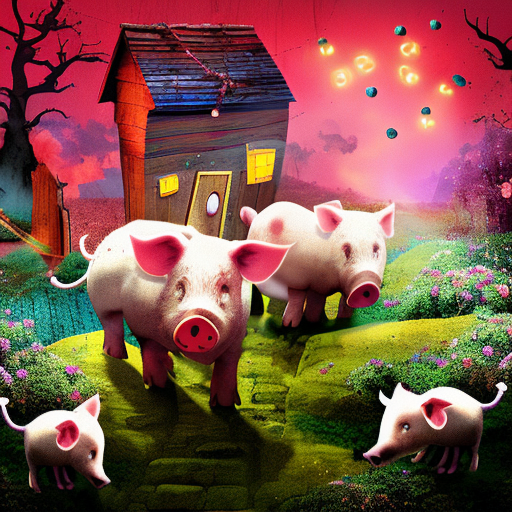The True Story of the 3 Little Pigs: A Hilarious Twist on a Classic Tale
Once upon a time, there were three little pigs who lived in the same neighborhood. We all know the traditional story of the Big Bad Wolf blowing down their houses, but have you ever wondered if there might be another side to the story? In “The True Story of the 3 Little Pigs” by Jon Scieszka and Lane Smith, readers get to hear the wolf’s perspective and discover a hilarious twist on the classic tale.
The Wolf’s Side of the Story
In this clever retelling, the wolf takes center stage and tells his side of the story. According to him, he was simply a misunderstood character who had a bad cold and needed a cup of sugar to make a cake for his granny. The wolf claims that he never intended to harm the pigs or blow down their houses. He insists that it was all just a big misunderstanding.
As the wolf goes from house to house, he encounters the first two pigs who have built their houses out of straw and sticks. Contrary to popular belief, the wolf claims that he only sneezed when he approached their houses, causing them to collapse. He then devours the pigs, but not out of malice, rather because he didn’t want their food to go to waste.
The Third Pig’s Ingenious Plan
The wolf’s luck takes a turn when he arrives at the third pig’s house, which is made of bricks. This pig, who is portrayed as the smartest of the three, is not easily fooled by the wolf’s tricks. Instead of letting the wolf in, the third pig devises an ingenious plan to capture him. He invites the wolf to come down the chimney, but instead of falling into the pot of boiling water, the wolf falls into a cauldron of soup.
A Lesson in Perspective and Empathy
“The True Story of the 3 Little Pigs” offers readers a valuable lesson in perspective and empathy. It encourages us to question the traditional narratives we’ve been told and consider alternative viewpoints. By giving the wolf a chance to tell his side of the story, the book challenges the notion of good versus evil and reminds us that things are not always as they seem.
This humorous retelling also teaches children the importance of critical thinking and not accepting things at face value. It encourages them to ask questions, consider different perspectives, and make their own judgments.
- The importance of questioning traditional narratives
- The value of empathy and understanding different perspectives
- The power of critical thinking and making informed judgments
“Well, maybe you could loan me a cup of sugar. I’m making a birthday cake for my dear old granny.” – The Wolf
In conclusion, “The True Story of the 3 Little Pigs” is a delightful and humorous twist on a classic tale. It challenges readers to consider alternative perspectives, question traditional narratives, and practice empathy. With its witty storytelling and clever illustrations, this book is sure to entertain both children and adults alike. So, the next time you hear a story, remember that there may be more to it than meets the eye.












